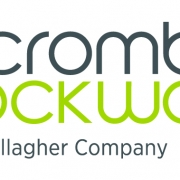Diving deep into Marlborough’s booming seafood industry
Think Marlborough, and you might immediately think “wine”. Boasting some of the best-known and oldest vineyards in the country, the viticulture industry looms large in the region. But dwell on the stats for a moment, and it becomes obvious just how important a part the seafood industry plays in Marlborough’s economic successes as well.
Blenheim-based Crombie Lockwood Group Broking Manager, David Wing, is keen to remind those beyond the region that, away from the picture postcard vineyards of the Wairau Valley, there is another globally recognised industry doing the hard yards in Marlborough and contributing in a big way to New Zealand’s economy: aquaculture.
“It sometimes gets lost amidst the good news stories about our wine production, but the history of, current successes and future potential for aquaculture in Marlborough really are of deep significance to the country as a whole,” says David.
“Marlborough aquaculture is a major contributor to both the wider national seafood industry and New Zealand’s GDP. Our local wild capture and aquiculture producers account for around 60 percent of the seafood industry’s contribution to the national GDP. And seafood as a stand-alone category accounts for 11 percent of New Zealand’s GDP.
“Where mussels and salmon are concerned, Marlborough now has the highest marine farming output of any region in the country.”
The numbers are certainly impressive. Taken together, marine farming, wild capture and processing jobs account for 3.7 percent of Marlborough’s total labour force. The combined industry accounts for approximately six percent of Marlborough’s regional GDP.
The headline acts are undoubtably mussel and salmon farming. Mussels are New Zealand’s largest marine farming product by volume and value; of the annual tonnage produced, Marlborough’s output has accounted for between 60 and 70 percent of total ‘greenweight’ tonnage in recent years.
Not far behind mussels in the production and export stakes sits salmon. While Atlantic salmon is the predominant product on the world stage, New Zealand’s King salmon is free from the sea lice that has challenged this species in foreign waters, meaning that New Zealand is the dominant King salmon supplier internationally. And, as a rarer species on the global stage, king salmon farmed in New Zealand commands a higher price-per-ton than its Atlantic counterpart.
Marlborough accounts for the lion’s share of New Zealand farmed salmon, with operations on Stewart Island, in Akaroa Harbour in Canterbury, and in the Central Otago freshwater hydro-canals near Lake Ohau accounting for the remainder of national production.
The marine service industry – boat building, surveying and repair, equipment servicing and retail – is also a sub-economy in itself, helping to keep both local marine operators and Marlborough’s economy buoyant.
For Crombie Lockwood, involvement at every step of the way is a given. David says his team offers specialist underwriting services for fishing boat operators, along with insuring both farmed produce and wild capture seafood from the water to the processing plant, and even when in transit as fresh or frozen goods. Factory infrastructure and office space also need comprehensive coverage.
Vessels range in sizes, but all represent major investments to the many operators in the region.
“The future looks positive for the seafood industry in Marlborough, as internationally aquiculture is very much a growth sector,” continues David.
“Demand currently outstrips supply for mussels, salmon and other seafood stocks, which means high prices in most categories. Aquaculture New Zealand’s latest export stats [for the 12 months to May 2019] show that total mussel exports were up five percent on the previous period, amounting to over $300m in export revenue.”
Risks? David says that, while warmer water temperatures in recent years have contributed to higher fish mortality rates in some bays of the Marlborough Sounds, fish husbandry has begun to adapt to a changing climate; lowering stock density which in turn is helping reduce mortality rates and improve the quality of fish.
The bigger risk to the industry lies in the future consenting process and what knock-on effects limitations on new consents will have for the aquaculture industry.
Currently around two percent of the Marlborough Sounds is consented for marine farming (approximately 3000 hectares in a total of 150,000 hectares). After rapid expansion in the 1980’s and 1990’s, the total area farmed – primarily in Pelorus Sound, Admiralty Bay and at Port Underwood – has remained relatively unchanged in recent years after a moratorium was applied to new marine farms in the Sounds in 1996.
“The big risk for the local industry is that an estimated 56 percent of marine farms in Marlborough have consents that either expire or come due for renewal by 2025,” says David.
“The consenting process has been very carefully managed in recent times and, it’s fair to say, the process and operational guidelines aren’t getting any easier for operators. Mussel farms have their critics regardless of how much money they bring into the region.
“Possible changes of status for marine farming under legislation have increased uncertainty around how financially viable some operations will be in the future.”
Changes in the way the Sounds are zoned for industry could potentially cost aquaculture millions in future decades. Fewer farms or less tonnage of product being exported will of course have a direct impact on household wages and the overall economy in the region.
“The industry will carry on. But a lot of people are waiting to see what happens,” David concludes.
“It’s an industry set up for volume production. But it’s also a very well-managed industry, with some talented, globally recognised local operators at the heart of it. The wine industry remains vital to Marlborough’s successes, but I believe aquaculture is just as much the lifeblood of our community as well.”

